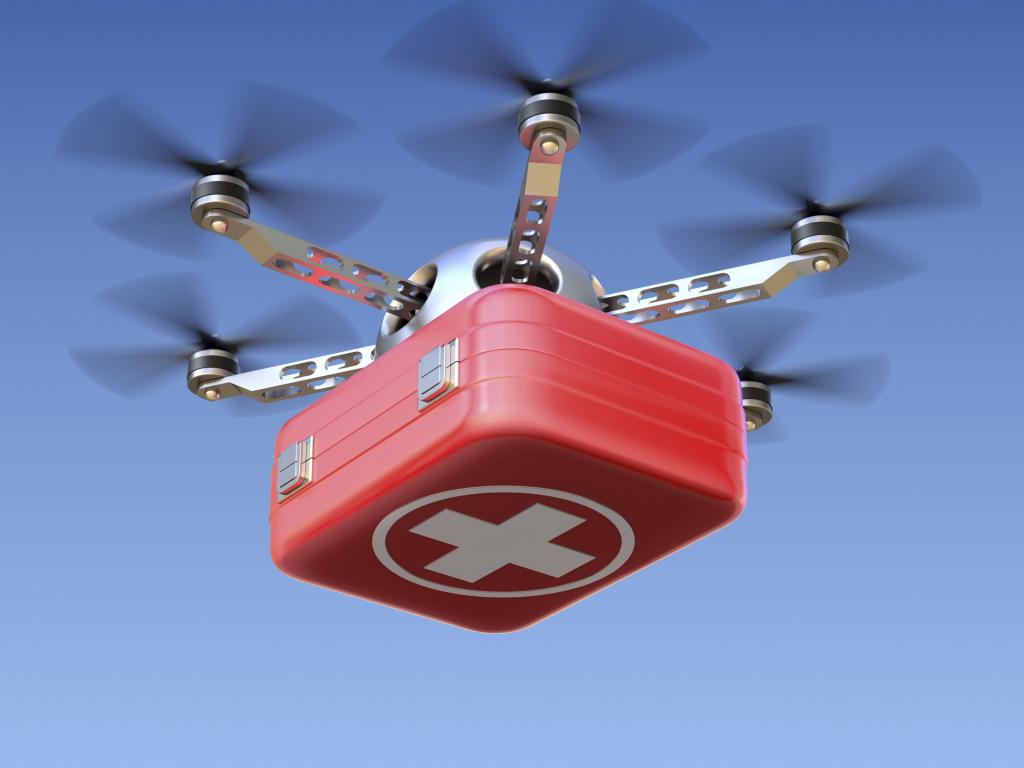There are many terms we can use to call a drone: whether it is Unmanned Aerial Vehicles (UAVs), Miniature Pilotless Aircraft or Flying Mini Robots. Drones are gaining more and more popularities in recent years. According to Business Insider (2017), the development of drone technology is still in its initial stage, of which mass adoption and usage are still yet to be realised.
Initially, drones were mostly used for military purpose. However, it is now evolving beyond their military origin to become powerful business tools. Now they’re being put to work in commercial and civil government applications from firefighting to farming (Goldman Sachs). The market opportunity it is creating is too large to ignore. There are some examples showing it has already made the leap to the consumer market. For example, Domino’s Pizza demonstrated a successful pizza delivery in New Zealand last year. Domino’s has said that it wants to become the first corporation– ahead of Google, Amazon and others who have invested heavily in drone delivery – to offer drone delivery to customers in a mainstream way (TechCrunch, 2016). Soon after Domino’s piloted its drone delivery testing, 7-Eleven, the world’s largest convenience store chain beat Google and Amazon to complete the first regular commercial drone delivery service in the US in December 2016 (recode, 2016).
We can clearly see the applications of drone technology have become a common interest of many industries and companies. Now, it is even used made use by healthcare industry. Zipline, a US-based healthcare company, has a mission to improve access to healthcare and save lives. It has raised $25 million in a Series B funding round to expand its humanitarian delivery drone business in Rwanda, the U.S. and beyond (TechCrunch, 2016). According to the company’s website, it has already launched the world’s first drone delivery system operating at national scale in Rwanda, October 2016. This year, it is about to launch an instant delivery system in Tanzania. The application of drones in healthcare makes it a reality for people who live in remote areas to get timely treatment within a short period of time. If this technology can be widely used in developing countries, many people who could have died would be saved. Furthermore, Qualcomm has invested heavily in connected healthcare with the rapid development of Internet of Things (IoT). Dutch multinational Philips is developing an open ecosystem and platform to advance and accelerate healthcare innovation with Qualcomm (Philips, 2017). This enables the company to provide personalized connected health care in the future.
The advancements and technologies required to make connected health a reality are here, and that care is shifting from the hospital to wherever the patient is. In my opinion, it is definitely a good thing to improve so many people’s lives with such innovation. The rapid growth of the drone industry has shown great potential already. However, there are some concerns we should be aware of. How can we ensure the platform and network for health care is secure and protected? Apparently, the rapid development of drones has outpaced the development of rules to govern their use. This uncertainty also has put restrictions on innovation of using this technology as well. How can we make use of drone technologies to deliver connected health care with a secure and safe system remains a question. There are certainly many obstacles and challenges in the future, but I believe eventually we can improve people’s lives by using drone technology with the evolution of regulations and innovation.
References
[1] Joshi, D. (2017, July 13). Exploring the latest drone technology for commercial, industrial and military drone uses. Retrieved October 22, 2017, from http://www.businessinsider.com/drone-technology-uses-2017-7
[2] Goldman Sachs. Drones: Reporting for Work. (n.d.). Retrieved October 22, 2017, from http://www.goldmansachs.com/our-thinking/technology-driving-innovation/drones/
[3] Kolodny, L. (2016, August 26). Flirtey flies pies for Domino’s in New Zealand. Retrieved October 22, 2017, from https://techcrunch.com/2016/08/26/flirtey-flies-pies-for-dominos-in-new-zealand/
[4] Glaser, A. (2016, December 20). 7-Eleven beats Google and Amazon to the first regular commercial drone delivery service in the U.S. Retrieved October 22, 2017, from https://www.recode.net/2016/12/20/14026396/7-eleven-drone-delivery-flirtey-first-retail-us-reno-nevada
[5] Kolodny, L. (2016, November 09). Zipline raises $25 million to deliver medical supplies by drone. Retrieved October 22, 2017, from https://techcrunch.com/2016/11/09/zipline-raises-25-million-to-deliver-medical-supplies-by-drone/
[6] Philips and Qualcomm announce strategic collaboration to advance personalized connected health care. (n.d.). Retrieved October 22, 2017, from https://www.philips.com/a-w/about/news/archive/standard/news/press/2016/20160831-philips-and-qualcomm-announce-strategic-collaboration-to-advance-personalized-connected-health-care.html


Interesting article, Yusi. I see great potential for drone-based delivery systems in Rwanda. However, personally I don’t thing such practices will succeed in developed countries. Regulation has become so strict nowadays, and I don’t see that lessening with the coming years. It is too bad because it has great potential and could possibly save a lot of lives.